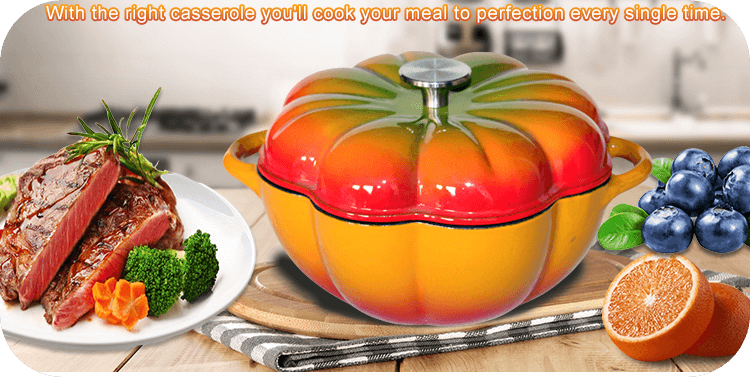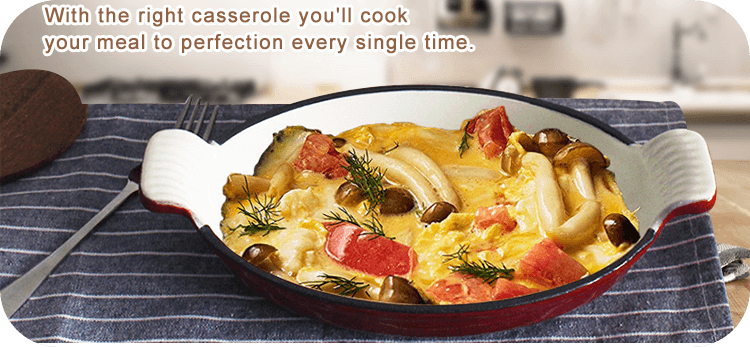Wash the pot
Once you cook in a pan (or if you just bought it), clean the pan with warm, slightly soapy water and a sponge. If you have some stubborn, charred debris, use the back of a sponge to scrape it off. If that doesn’t work, pour a few tablespoons of canola or vegetable oil into the pan, add a few tablespoons of kosher salt, and scrub the pan with paper towels. Salt is abrasive enough to remove stubborn food scraps, but not so hard that it damages the seasoning. After removing everything, rinse the pot with warm water and wash gently.
Dry thoroughly
Water is the worst enemy of cast iron, so be sure to dry the entire pot (not just the inside) thoroughly after cleaning. If left on top, the water can cause the pot to rust, so it must be wiped down with a rag or paper towel. To really make sure it’s dry, place the pan over a high heat to ensure evaporation.

Season with oil and heat
Once the pan is clean and dry, wipe the whole thing down with a small amount of oil, making sure it spreads throughout the entire interior of the pan. Do not use olive oil, which has a low smoke point and actually degrades when you cook with it in the pot. Instead, wipe the whole thing down with about a teaspoon of vegetable or canola oil, which have a higher smoke point. Once the pan is oiled, place over a high heat until warm and slightly smoking. You don’t want to skip this step, as unheated oil can become sticky and rancid.
Cool and store the pan
Once the cast iron pot has cooled, you can store it on the kitchen counter or stove, or you can store it in a cabinet. If you are stacking cast iron with other POTS and pans, place a paper towel inside the pot to protect the surface and remove moisture.
How to prevent rust.
If the cast iron pot is used for a long time, there will be a lot of scorch marks and rust spots at the bottom of the pot. If you often cook, it is recommended to clean and maintain it once a month.
Scrub the whole pot, including the surface, bottom, edge and handle thoroughly with “steel wool + dish detergent” to clean all rust spots.
A lot of people will make a mistake, every time the maintenance of rust only deal with the “bottom cooking part”, but the cast iron pot is “one formed” pot, must be placed at the bottom of the pot, the handle whole to deal with, otherwise rust, will soon appear in those hidden places.
Rinse the pot with hot water, scrubbing it with a sponge or vegetable cloth.
After cleaning, be sure to bake the cast iron pot over a gas stove until completely dry.
Every time the cast iron pot is used, cleaned and maintained, remember to “keep it dry”, otherwise it will be damaged.

The maintenance method of cast iron pot
Make sure the pot is completely dry and drizzle the pot with oil.
Flax seed oil is the best maintenance oil, but the price is somewhat higher, and we can also use general olive oil and sunflower oil.
As with cleaning, use a kitchen paper towel to grease the entire pot completely. Remove another clean paper towel and wipe off excess grease.
The bottom of the cast iron pot is not coated, and there are many small holes. The oil will form a protective film on the bottom of the pot, which will fill all the substitutions, so that it is not easy to stick the pot and burn when we cook.
Turn the oven to its maximum heat (200-250C) and place the cast iron pot in the oven, pot side down, for 1 hour.
The temperature must be enough that the grease on the cast iron pot exceeds the smoke point and binds to the pot itself to form a protective layer. ; If the temperature is not high enough, it will just feel sticky and greasy, without the maintenance effect.
Cleaning and use.
Cleaning: scrub with soft sponge, rinse with water, and then dry with paper towel to avoid damage to the bottom surface coating, release harmful substances, so as not to affect human health.
If the bottom of the pot is too oily, soak up the grease with paper towels before washing with hot water.
Cast-iron POTS can be fitted to a wide variety of modern stoves, many of which will be fitted with tiles that can easily accumulate and store heat at the bottom.
The traditional metal non-stick pot is coated with a layer of PTFE, which is added to give the pot a non-stick effect, but is prone to release carcinogens when damaged. Later, a coating made of ceramic was developed, which is relatively safer. When using a non-stick pot, be careful to avoid cleaning with a hard steel brush or cooking with an iron spatula to avoid scratching and coating.
Do not dry burn non-stick pot, this will easily damage the coating; If the bottom coating is found to be scratched or cracked, it should be replaced with a new, to have the correct idea of “non-stick pot is a kind of consumable”, do not save money but harm to health,
How to rust iron pot: Soak vinegar
Plug the plunger at the bottom of the sink, prepare equal parts of vinegar and water, mix and pour into the sink, completely submerge the pot in the vinegar water.
A few hours later, check whether the rust on the iron pot melting, if not clean, then extend the soaking time.
If the cast iron pot is soaked in vinegar water for too long, it will corrode the pot instead!! .
After a bath, it’s time to give the pot a good scrub. Use the rough side of the vegetable cloth or a steel brush and rinse with warm water to remove residual rust. Dry the cast iron pot with kitchen paper towels and place in a gas stove. On the low fire drying, you can carry out the subsequent maintenance action.
Post time: Jan-04-2023




